Notre Dame de Paris, UNKNOWN DESIGNER, Gothic, PARIS, France, 1163 AD
ADD CAPTIONS & vocab links
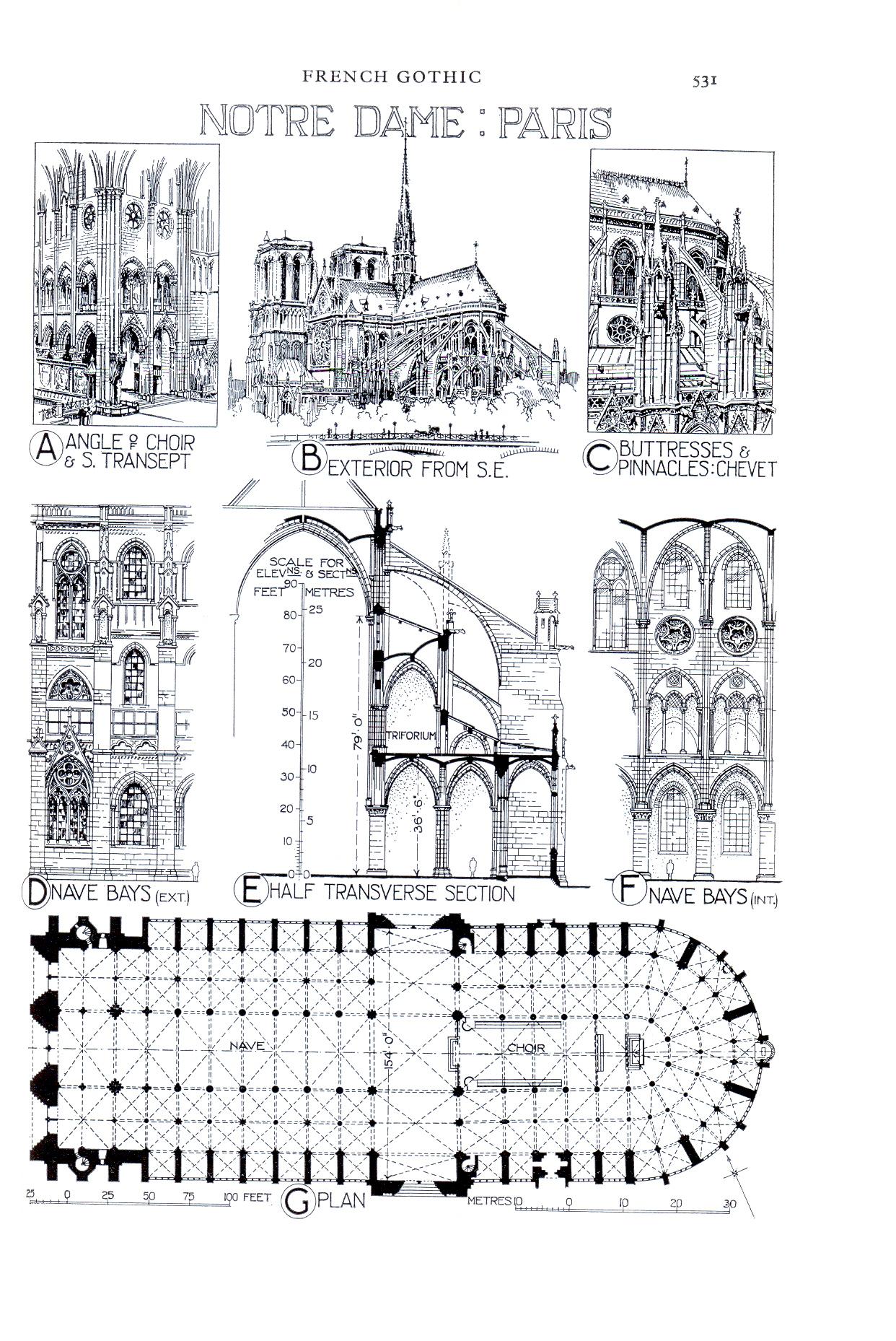
Image 1: Orthographic drawings
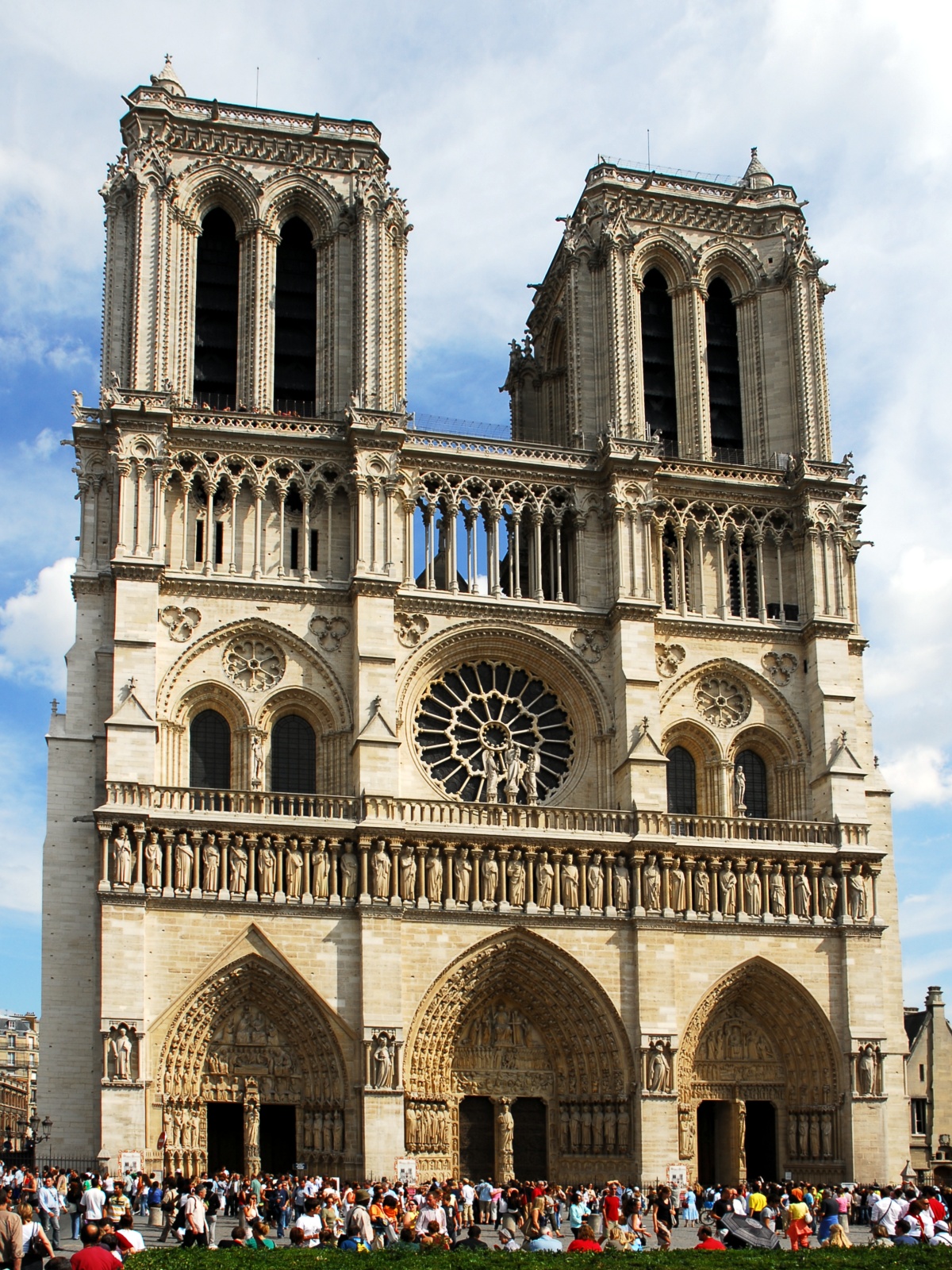
Image 1: Exterior view of Notre Dame Cathedral
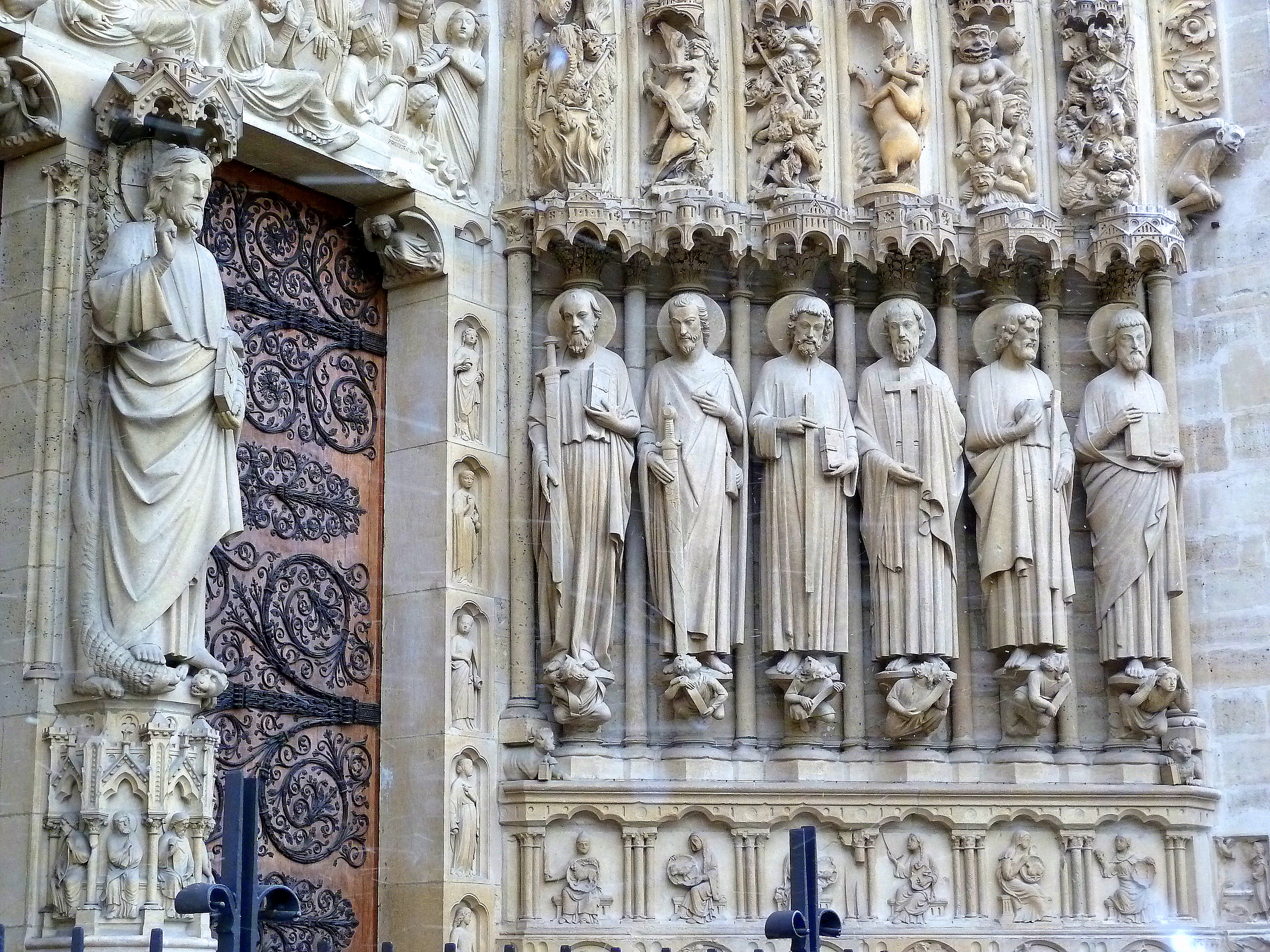
Image 2: Sculptural area of facade
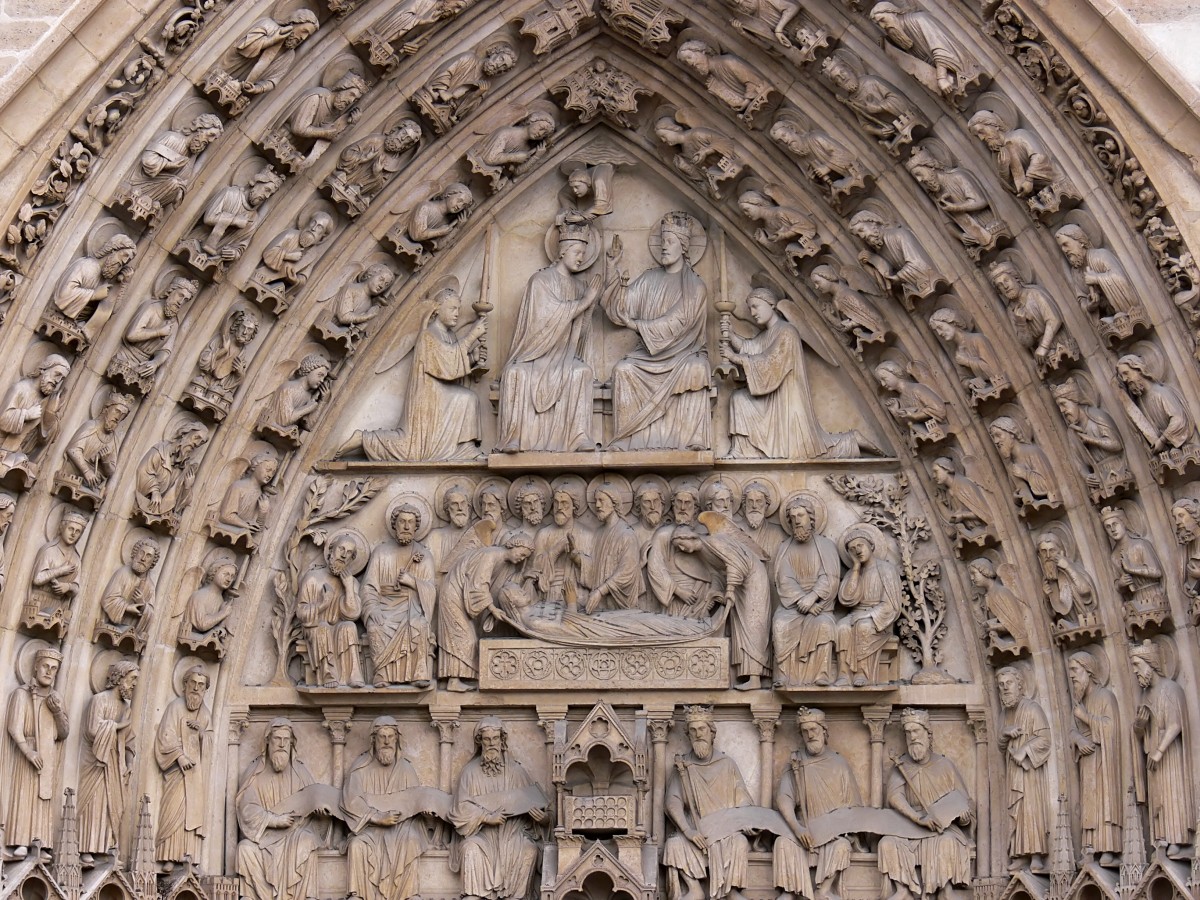
Image 3: Sculptural area of facade
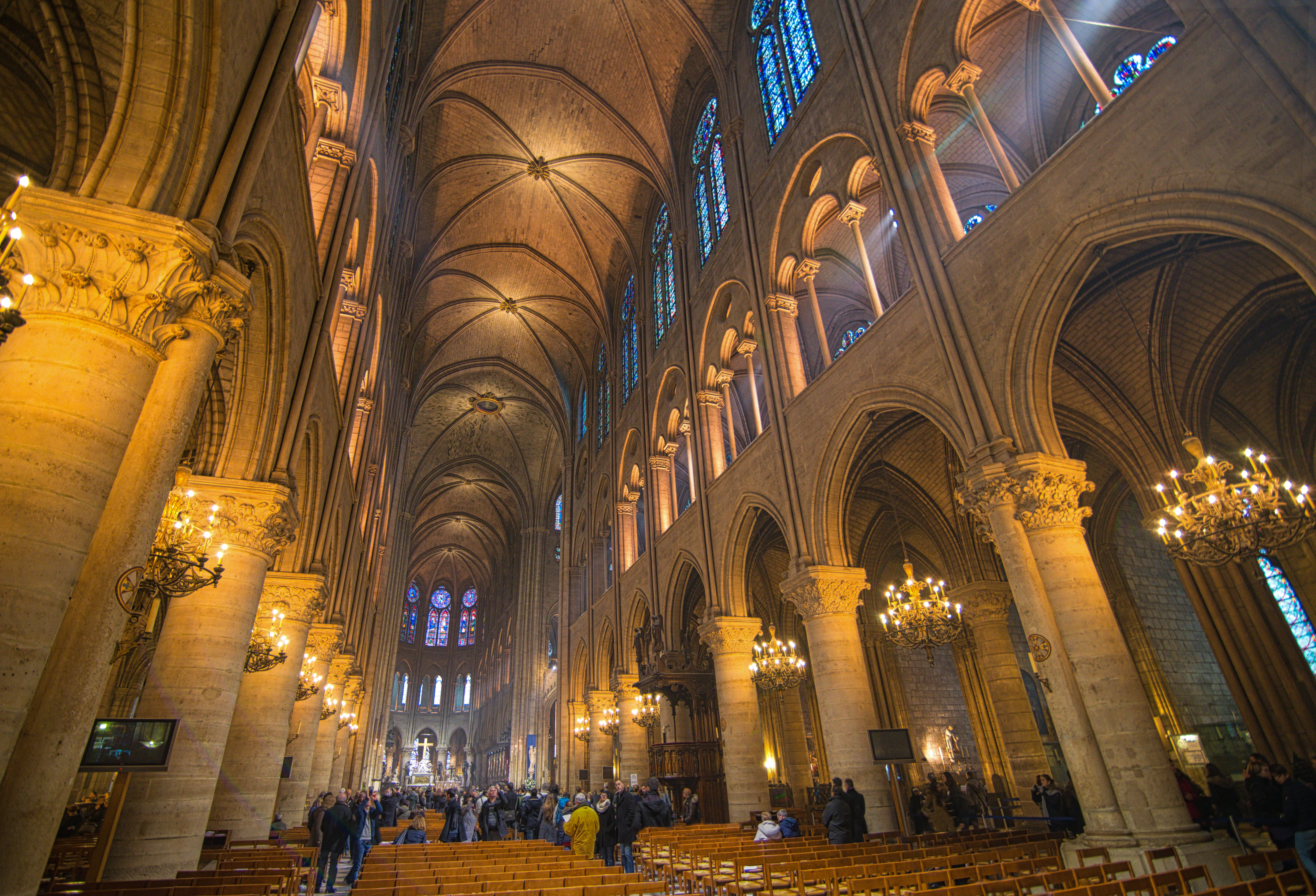
Image 4: Interior Lighting
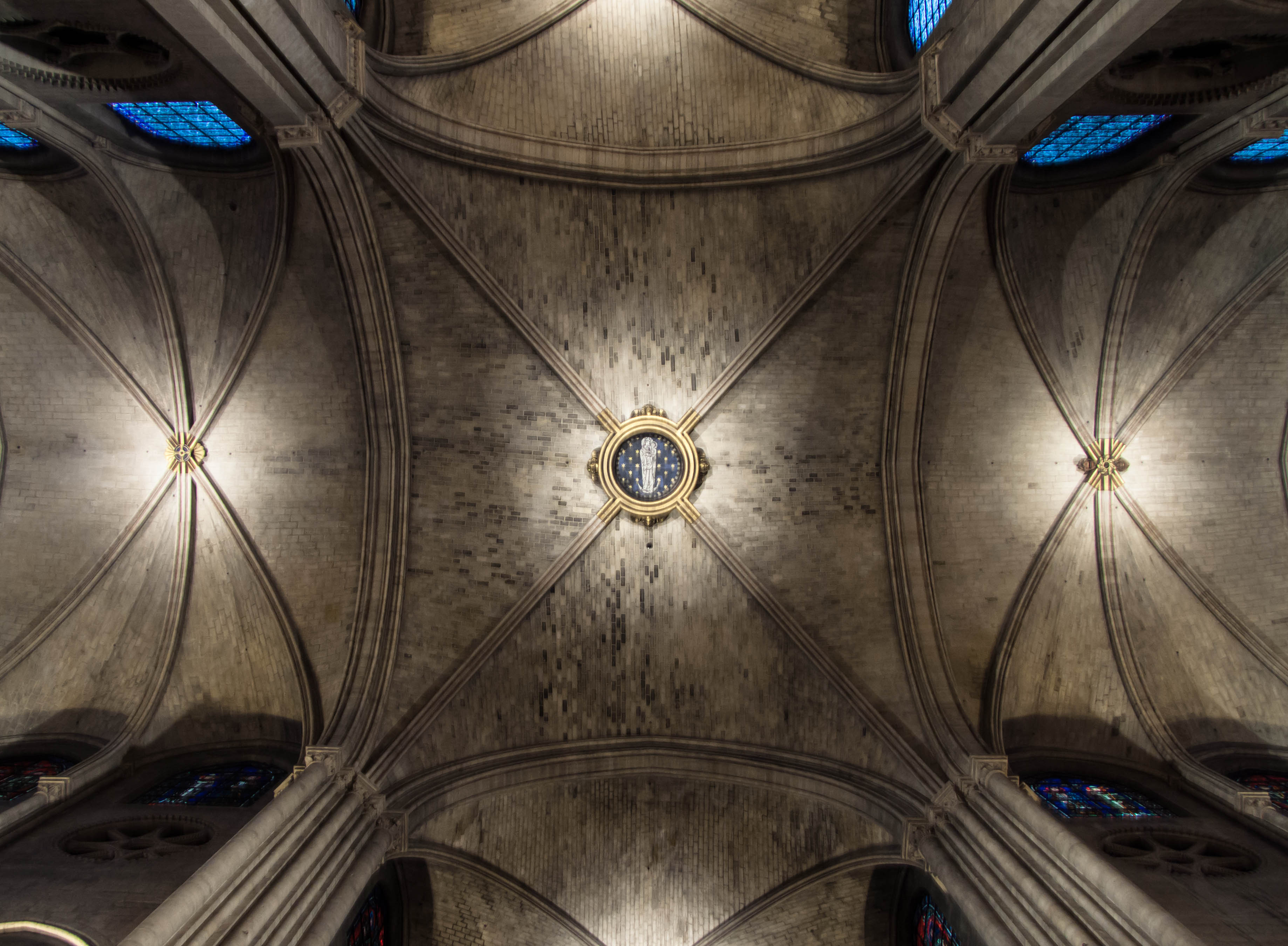
Image 5: View of Ribvaults
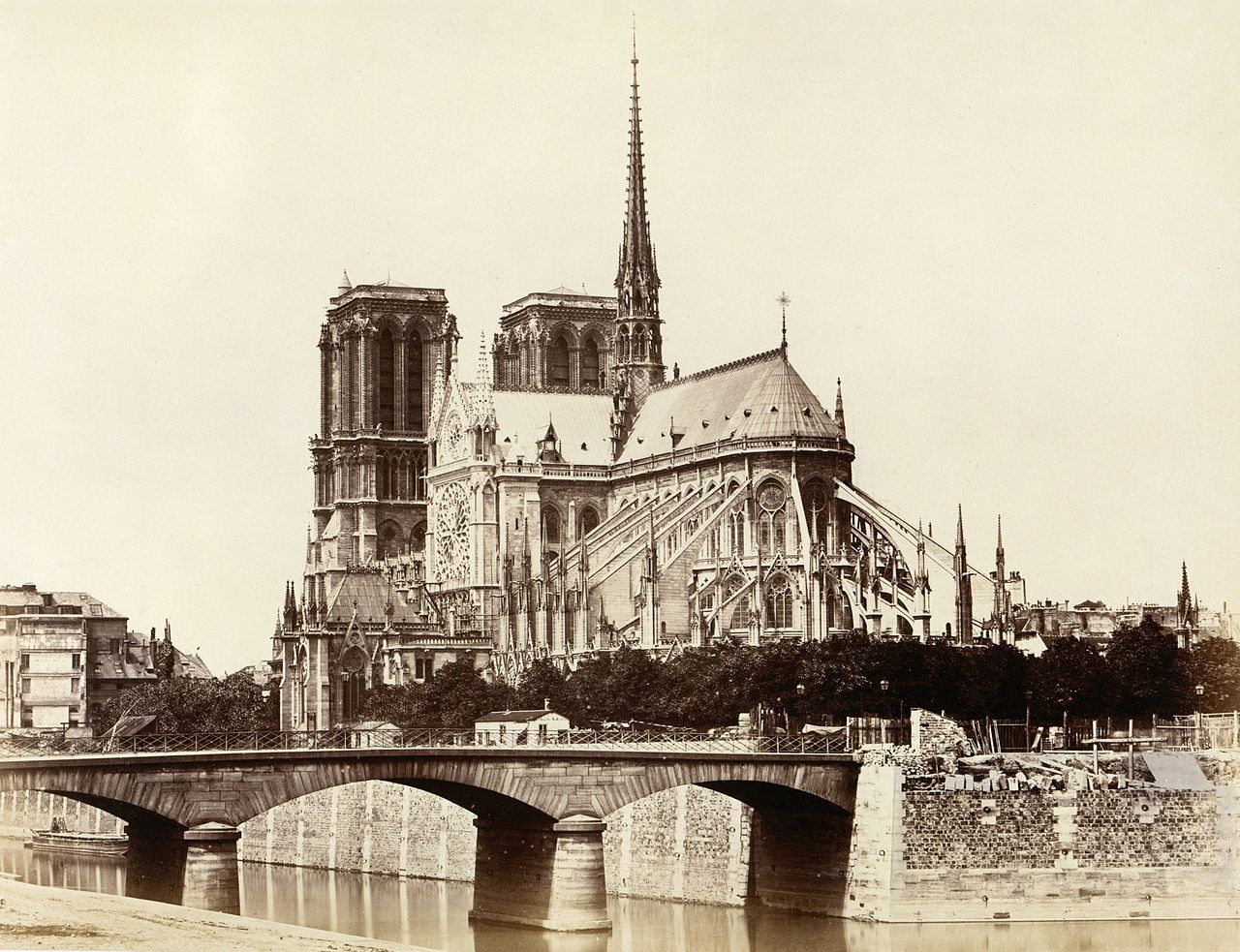
Image 6: Exoskeleton transferring structural forces from interior to exterior
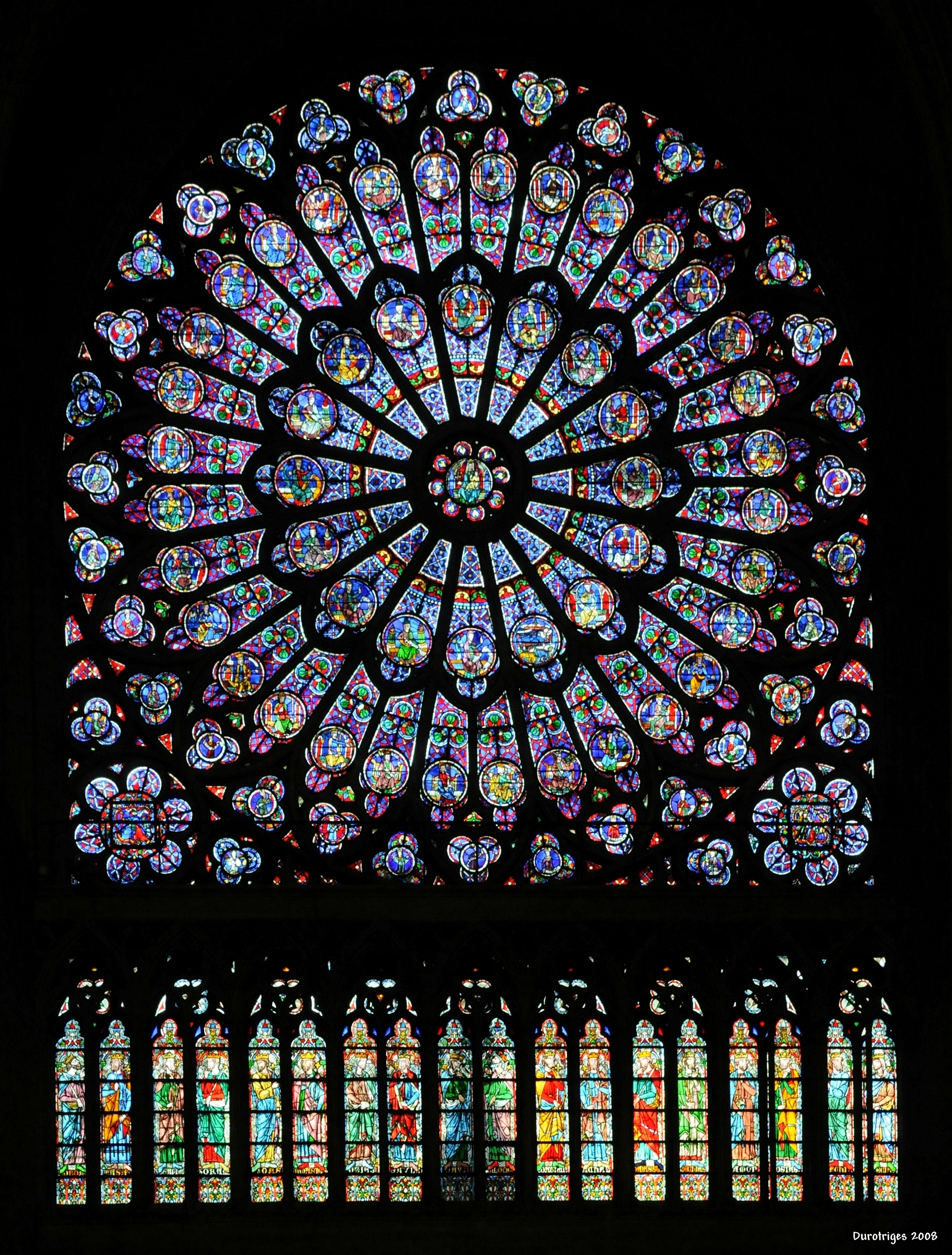
Image 7: Rose Window
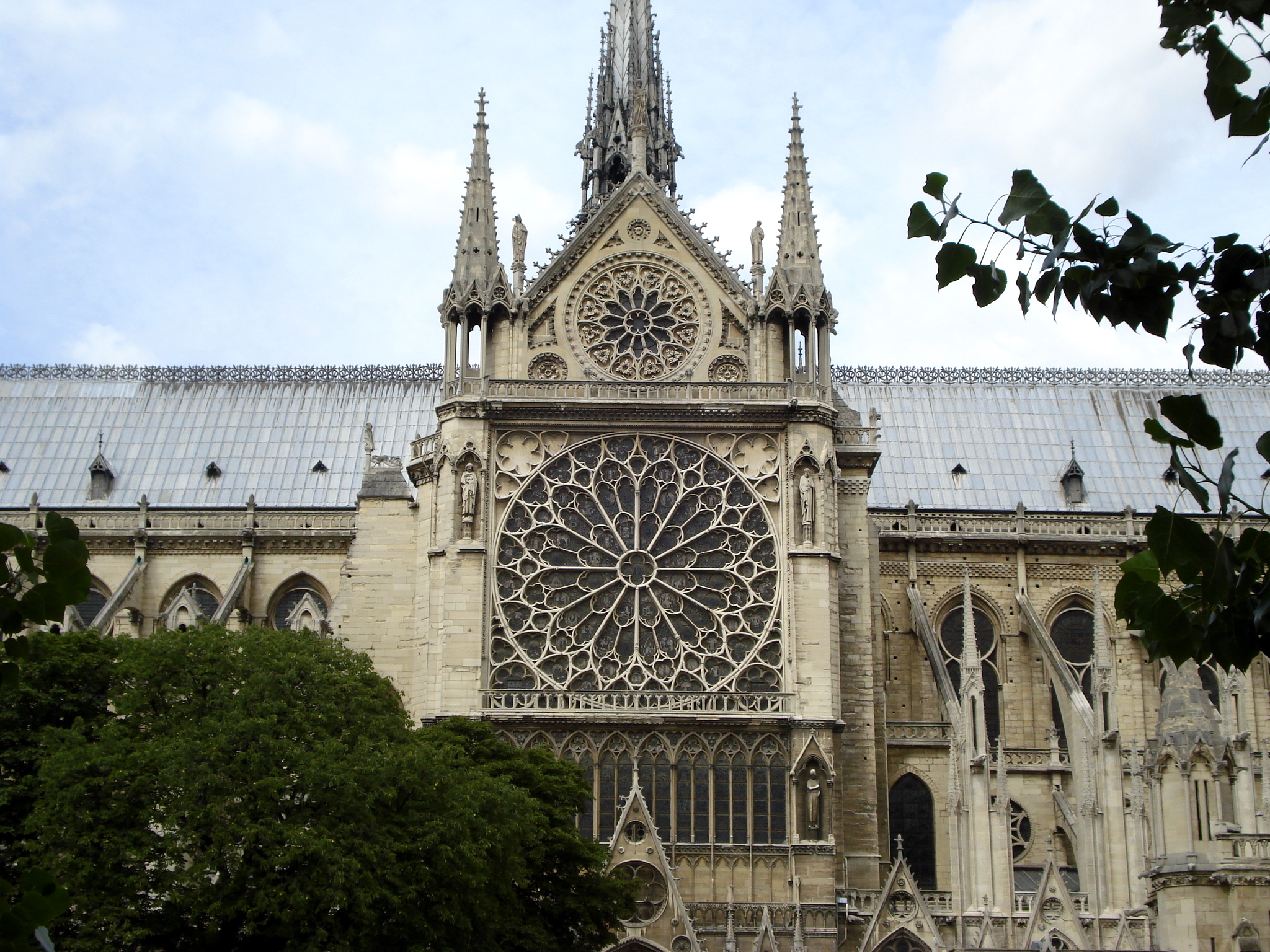
Image 8: Carving of stone holding the glass in place for a rose window
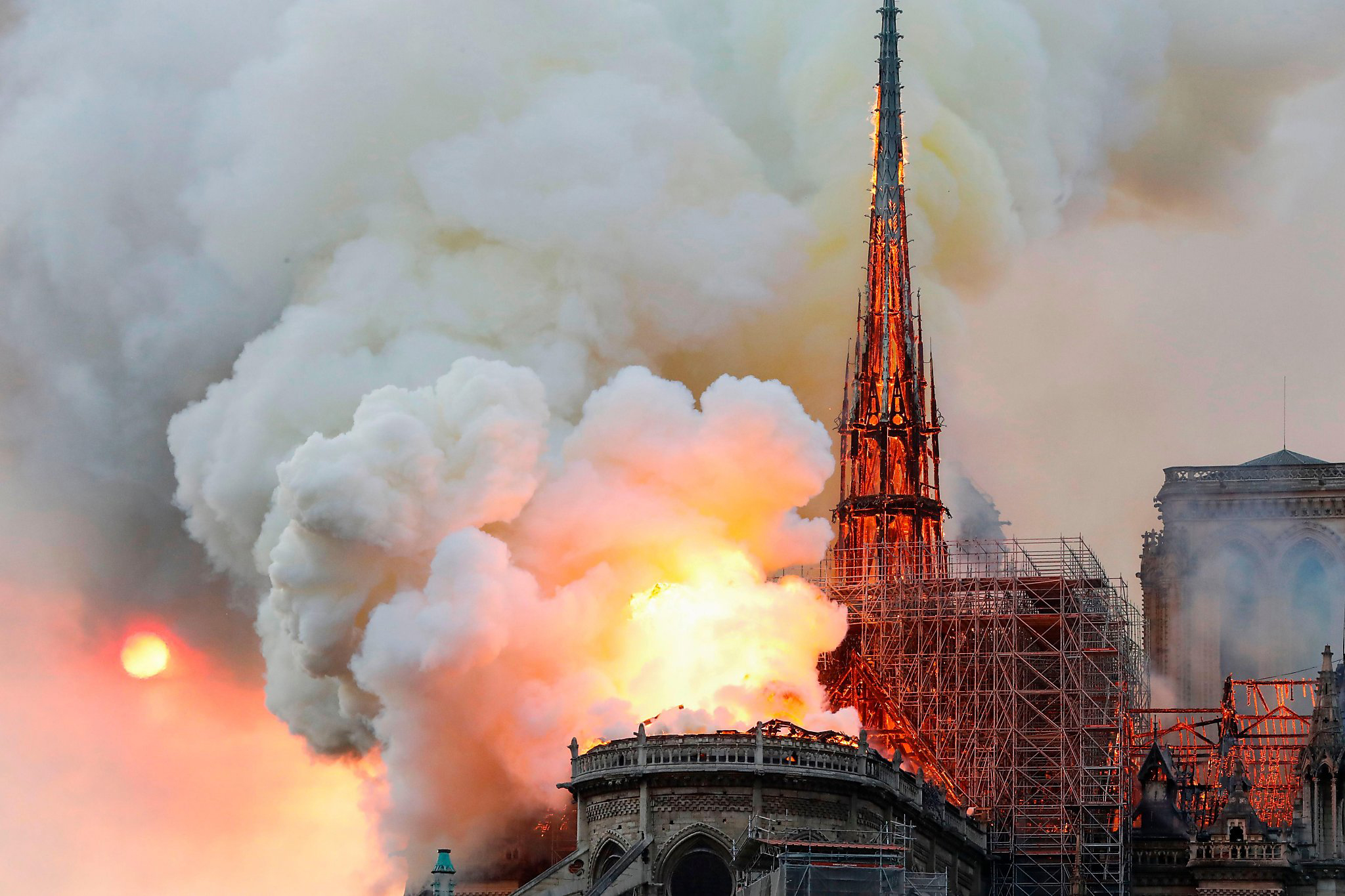
Image 9: Devastating fire with the spire and a large portion of the interior ceiling collapsing
Notre Dame de Paris Cathedral is located in an urban context, within a special place known as the Ile de la Cité, or Island of the city. The River Seine provided a natural defense system to the island when it was settled during Classical Roman times. Today the scale of the island is small compared to the density constructed on the island. The large figural void preceding the WESTWORKS helps to provide a larger presence for Notre Dame in contrast to the density of the island.
Notre Dame westworks facade is symmetrical about a central axis with a clear tripartite division, both vertically and horizontally (image 1). There are three sets of entryways on the westworks, reiterating the importance of the Trinity. The entryways have a slight telescoping of space, allowing for extra surface area for decoration and sculpture to be carved. This area starts to envelop the body before passing the threshold of the westworks, then suddenly expanding to the vast scale of the interior. The TYMPANUM is one of the most sculptural areas of the church located over the doorway (images 2 and 3). The westworks is highly decorative, particularly at this closest scale to humans. The imagery depicted are religious figures and iconography to promote the people and events associated with Christianity.
Entering into Notre Dame, the interior is SUBLIME through vast scale and quality of light. (image 4). The central NAVE is open with SIDE AISLES providing circulation along the edges. The TRANSEPT is less pronounced as a crossing arm at Notre Dame compared to other churches. The interiors focus towards the APSE, the most sacred and hierarchical part of the Christian church, and usually where the altar is located. Many Gothic floor plans are rather similar repeating with slight differences these key elements.
The interior elevation focuses on three main horizontal bands. The ARCADE is the lowest horizontal band of the interior façade. The arcade is the side aisles extruded in elevation.
TRIFORIUM is the middle horizontal band of the interior façade. The triforium is characterized by repeated iterations of three, symbolizing the Trinity. CLERESTORY is the top most horizontal band of the interior façade. Clerestory is one of the most DEMATERIALIZED areas of the structure with the largest amount of glass. This area allows the most amount of light to enter through the clerestory. Light was symbolic to represent a heavenly presence in the Gothic.
The dematerialization is possible through many structural innovations working together. The POINTED ARCH is an arch, pointed in shape, reducing lateral thrust forces. The reduction of forces allows for wider and taller spans between structures. The RIB VAULT is one of the most structural elements on the interior ceiling of the church. The builders thickened the structure where the forces were transferring most directly. Rib vaults appear as Xs on the ceiling (image 5). PIERS are bundles of columns. Piers gather structure from the form of a wall to increase the span between columns. FLYING BUTTRESSES are a structural exoskeleton transferring structural forces from interior to exterior further dematerializing interior structure (image 6).
At the end of the transepts is often a large, monumental circle-shaped window called a ROSE WINDOW (image 7). The rose window is another way to increase light in the church. In a similar idea to the westworks, with glass instead of stone, the rose window features and depicts important events and people of the faith. TRACERY is the thin carving of stone, holding the glass in place for either a rose window or clerestory (image 8). Stone works well in compression but has more challenges when working in tension. The quality of the stone in the clerestory and rose window to be carved incredibly thin and lace like was sublime. The exceptionally skills of the master masons to carve and push the limits of stone are unmatched today.
Though no one person is usually given credit for the large Gothic churches, master masons were pivotal in the development of these masterpieces of construction. These master masons are the people building and many times designing the churches. They held the secrets and innovations about how to construct these monuments. They were able to achieve qualities and precision in the stone carving to create not only the entire structure from stone but details to make stone look like feathers, hair, skin, or draping cloth.
While Notre Dame is an incredible tourist attraction, these churches are still religious buildings used for faithful worshippers. Tragically in April 2019, Notre Dame had a devastating fire with the spire and a large portion of the interior ceiling collapsing (image 9). Massive funds have been donated for a reconstruction which will take time, but Notre Dame will return to its previous grandeur and beauty.
Media Attributions
- Drawings of the Notre Dame de Paris is licensed under a Public Domain license
- Exterior view of Facade of Notre Dame © Jerome Dumonteil
- Detail of Portal to Notre Dame © Tom Flemming is licensed under a CC BY-NC (Attribution NonCommercial) license
- Detail of Portal to Notre Dame © Walwyn is licensed under a CC BY-NC (Attribution NonCommercial) license
- Interior View of the Notre Dame © Jorge lascar is licensed under a CC BY (Attribution) license
- View of Vaults at Notre Dame © Anthony is licensed under a CC BY (Attribution) license
- Historic View of the Back of Notre Dame © The Public Domain Review is licensed under a Public Domain license
- Interior view of Rose Window at Notre Dame © Durotriges is licensed under a CC BY-NC (Attribution NonCommercial) license
- Exterior of Rose Window at the Notre Dame de Paris © Carles Tomas Marti is licensed under a CC BY (Attribution) license
- Image shows fire of Notre Dame © manhhai
the entrance to a church
one of the most sculptural areas of the church, located over the doorway
inspiring a feeling of awe, could be by scale, function or effect.
large central area of a church, where the congregation is seated
aisles on the side of the nave allowing for a procession and movement of people
the crossing arm of the church perpendicular to nave
most sacred and hierarchical part of the Christian church, usually where the altar is located. The apse, with few exceptions, faced east towards Jerusalem.
lowest horizontal band of the interior façade. The arcade are the side aisles extruded in elevation.
middle horizontal band of the interior façade. Triforium is characterized by repeated iterations of three, symbolizing the Trinity.
the top most horizontal band of the interior façade. Clerestory is one of the most dematerialized areas of the structure with the largest amount of glass. This area allows the most amount of light to enter through the clerestory.
reduction in structure
an arch, pointed in shape, that reduces lateral thrust forces. The reduction of forces allows for wider and taller spans between structure.
one of the most structural elements on the interior ceiling of the church
bundles of columns. Piers gather structure from the form of a wall to increase the span between columns.
a structural exoskeleton transferring structural forces from interior to exterior to dematerialize interior structure
a large circular window, often decorated with stained glass windows. Rose windows are located on the ends of the transepts, sometimes on the westworks also.
thin carving of stone, holding the glass in place for either a rose window or clerestory
